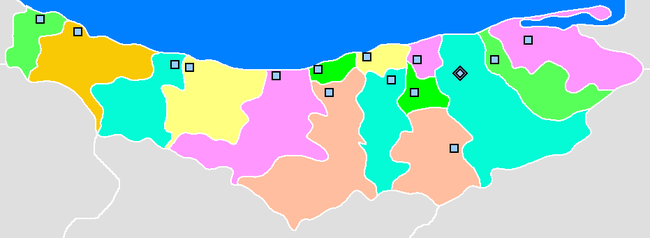Persian, an Iranian people who speak Mazandarani, a distinguished north west Iranian language which most resembles Gilaki and Sangiseri.
History
The province is known to have been populated from early antiquity, and Mazandaran has changed hands among various dynasties from early in its history. Under the Achaemenids, it seems to have been administered as a sub-province of Parthia and is not named separately in the provincial lists of Darius and Xerxes. There are several fortresses remaining from Parthian and Sassanid times, and many older cemeteries scattered throughout the province. During this era, Mazandaran was part of Hyrcania Province which was one of important provinces.
With the advent of the Sassanid dynasty, the King of Mazandaran (Tabaristan and Padashkhwargar) was Gushnasp. These families had descendants who ruled during the Islamic period.
Pre Islamic History
During the post-Islamic period the local dynasties fall into three classes: 1. local families of pre-Islamic origin, 2. the ʿAlid sayyid s, and 3. local families of secondary importance). Province also lies Qazvin and Gilan to the west. Mazandaran province is geographically divided into two parts: the coastal plains, and the mountainous areas. The Alborz Mountain Range surrounds the coastal strip and plains of the Caspian Sea like a huge barrier.
There is often snowfall during most of the seasons in the Alborz regions, which run parallel to the Caspian Sea's southern coast, dividing the province into many isolated valleys. The province enjoys a moderate, semitropical climate with an average temperature of 25 °C in summer and about 8 °C in winter. Although snow may fall heavily in the mountains in winter, it rarely falls around sea lines.
 Post Islamic History
Post Islamic HistoryThe population of the province has been steadily growing during the last 50 years. The following table shows the approximate province population, excluding the Golestan province, which has separated as an independent province in 1998 [4].
Population
The province covers an area of 46,656 km². According to the census of 1996, the population of the province was 2,602,008 of which 45.89% were registered as urban dwellers, 54.1% villagers, and remaining were non-residents. Sari is the capital city of the province.
Mazandaran is divided into 15 shahrestans (approximately equal to counties). All the shahrestans are named after their administrative center, except Savadkooh. The following map shows the respective positions of the shahrestans.

 Administrative Divisions
Administrative DivisionsMazandaran is connected to the capital of Iran, Tehran, through three transit roads of Haraz (Amol-Rudehen), Kandovan (Chalus-Karaj), and Firouzkouh (Qaem Shahr-Firouzkouh), while Sari, Nowshahr and Ramsar airports connect it to the other parts of the country.
Culture
 Lefthit
Lefthit